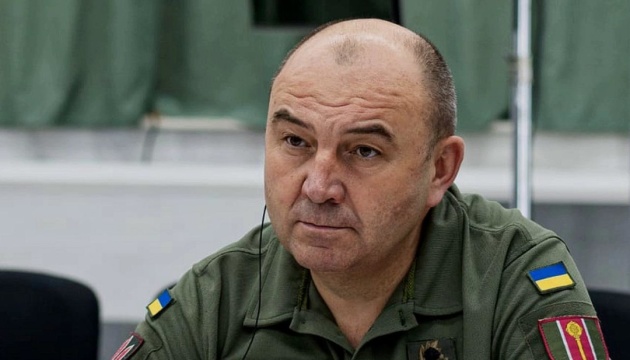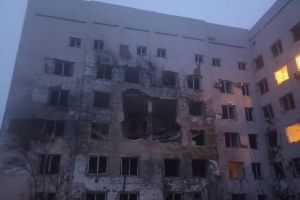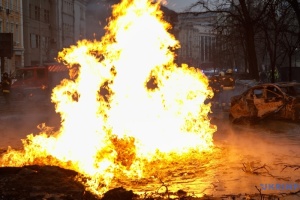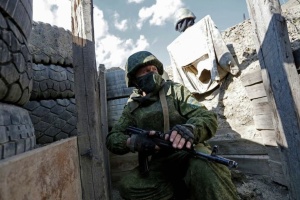
First Deputy Defense Minister Havryliuk: Strikes on Russia’s military targets are not escalation in war, but a way to end it
Once again, I return to the arithmetic of war. It is important. It gives an understanding of the situation and suggests making certain decisions. Prospect modeling is based on the analysis of basic factors: the available forces of the parties, their technical reserves, the potential of the defense industry, mobilization resources, the state of the economy, and other influential factors. The ability to understand and analyze these factors will crystallize into decisions that will be crucial. Decisions that will help to level the enemy's strong arguments.
WHAT IS THE NUMBER ONE QUESTION IN WAR?
Recall the beginning of the war: Russia outnumbered the Armed Forces of Ukraine many times over in tanks, artillery guns, MLRS, and virtually everything else. During the two and a half years of war, the Defense Forces destroyed more than 8,500 (!) Russian army’s tanks, more than 17,000 (!) artillery systems, about 1,000 (!) air defense systems, about 370 aircraft, and almost 2,500 cruise missiles. What army in Europe has such an arsenal? The Defense Forces inflicted unprecedented losses on the enemy thanks to the resilience of our soldiers, rational warfare tactics and the effective use of available weapons!
It is important to highlight that one of the main striking fists of the Russian army in its warfare is artillery. The Russian army command was confident that their artillery power would burn through the Ukrainian defensive lines. The No.1 question in a war is what forces and means of firepower the parties have, how many arms, ammunition of various types, etc. Even before the war, the Russians had estimated that Ukraine would critically short of various types of ammunition. Our largest weapon depots and warehouses had been exploding for several years in a row. The Russians were convinced that their ammunition stockpiles were incomparably larger. Even larger than the total stockpiles of artillery of European partner countries of Ukraine. Over the two and a half years of large-scale war, the Russians fired more than 300,000 shells at the positions of our defenders and frontline cities every month. Sometimes even with higher intensity. The Russian artillery covered large areas, and the stockpile of shells made it possible. Estimations made by the Russian army command were clear and understandable - Ukrainian forces would not survive under such fire...
WESTERN ARTILLERY SYSTEMS CAN OFFSET THE ENEMY'S ADVANTAGE IN THE NUMBER OF SHELLS IF THE RATIO IS 1 TO 3, BUT NOT 1 TO 8
However, our counterarguments were ultimately successful. We continue to hold back the enemy's advance, despite their superiority in artillery, equipment, personnel, and air dominance. At the same time, I remind you that we have already destroyed more than 17,000 Russian artillery systems (!). Yes, they still have Soviet-made artillery stocks, but they are not unlimited. With certain types of equipment and weapons, Russia is approaching the point where it will not be able to compensate for its daily losses.
What factors contributed to our success? Among the key factors are the precision and long-range strikes by Western artillery and the tactics of its use: one shot - one hit! The Russians do not have such high-precision shells as our allies have provided us with. Russian artillery is clearly inferior to Western artillery systems in terms of range. The tactics of using weapons are also extremely important. As well as maneuverability, cross-country ability, speed of deployment, availability of automated control systems, and rate of fire. As an example, our western self-propelled artillery systems crews: they perform combat missions faster and more efficiently. We are able to outnumber and outplay the enemy in counter-battery combat. And these are key factors in the confrontation with Russian artillery.
What factors contributed to our success? Among the most significant contributing factors are the precision of Western artillery and the efficacy of long-range strikes, as well as the tactical employment of these capabilities.
It is also important to acknowledge that the advanced capabilities of Western artillery systems, including their precision and long-range, can negate the advantage held by enemy forces in terms of the number of shells they possess, for example, if the ratio is 1 to 3, but not 1 to 8, as observed in early 2024.
The ability to spend less to achieve the desired result is also the mathematics of war. It is also noteworthy that unmanned systems are playing an increasingly significant role in this war. Strike drones, especially since 2024, have significantly increased the statistics of destroyed enemy equipment: tanks, artillery systems on the battlefield, and enemy aircraft at their airfields in the deep rear. In the context of this topic, it is also appropriate to talk about the experience of the Ukrainians' fight against the Black Sea Fleet. Ukraine had no ships, but destroyed a significant number of enemy ships and drove the rest into Russian bays. This serves as an illustrative example of an asymmetrical response to an enemy's superiority in weaponry.
NEW SUPPLIES OF ARTILLERY, ARMORED VEHICLES, AND AMMUNITION FOR RUSSIAN UNITS MUST BE DESTROYED FAR FROM THE FRONT LINE
What's next? Military factories in Russia work around the clock, plus ammunition from outside. Is it realistic for us to achieve parity with Russia in the number of shells? Yes, if we deliver significantly fewer of them to the front line. This is simple arithmetic. It is easy to understand if we have the appropriate tools of influence. I mean, if we have enough modern long-range weapons and our partners remove restrictions on its use. When we can strike at Russian facilities, arsenals, logistics routes. New supplies of artillery, armored vehicles, and ammunition to Russian units must be destroyed far from the front line. Under such conditions, we have a chance to knock out one of the main tools of warfare of the Russian army - their artillery. And not only it.
Another key advantage for the Russians in the war is air dominance. To advance their infantry, starting in late 2023, the Russians have been increasingly and massively using guided aerial bombs of various capacities against our positions and frontline settlements.
WHAT CAN “LAND” ENEMY TACTICAL AIRCRAFT?
If the enemy dominates the skies, and if we do not currently have the ability to increase our aircraft fleet, we need to reduce the activity of their tactical aircraft by other means. We need to strengthen the air defense, increase the number of long-range strike weapons, and so on. This is also the arithmetic of war.
A robust air defense system can “land” enemy tactical aircraft and protect our cities from Russian missiles. That is why air defense systems and missiles for them remain on the list of Ukraine's top priorities. These are a variety of systems with different ranges, including short-, medium-, and long-range. The most difficult task is to protect frontline town and villages, as there are only a few minutes to respond after a missile is launched. It is essential to ensure comprehensive coverage by air defense systems. However, the risk of being hit by the enemy is the highest there.
LONG-RANGE WEAPONS ARE AN ARGUMENT FOR THE KREMLIN THAT THE PRICE OF WAR IS TOO HIGH FOR RUSSIA
What would be the military response to the enemy's superiority in artillery, air dominance, and continued missile terror? Strikes on the enemy's depots and warehouses, its airfields. As well as enterprises that generate revenue for the Russian budget and are involved in the production of weapons. These enterprises are also responsible for the killing of Ukrainians and the destruction of our civilian infrastructure and energy system. It is important to constantly and purposefully reduce the military potential of the Russian army. I repeat that missile and bomb carriers, i.e. aircraft, from a military point of view, are most effectively destroyed at airfields. To weaken the enemy's frontline units, it is worth aiming high-precision and long-range missiles at the enemy's arsenals in the rear, destroying stocks of shells, fuel, equipment...
This is the most effective tactic of warfare, given the military advantages of the Russians. It is the most pragmatic and effective way to bring the Russians to the negotiating table on our terms. Long-range weapons and the removal of barriers are effective tools of war, and they answer the main question of our society: when will the war end?
Long-range weapons and the lifting of restrictions on their use against Russian military targets are not a threat of escalation in the war, but a way to end it. Because it is long-range weapons, aircraft, and the powerful air defense that will bring closer the moment when the Kremlin finally realizes that the Russian army cannot succeed in Ukraine, that the price of war is too high for Russia.
Ivan Havryliuk, Lieutenant General, First Deputy Defense Minister of Ukraine
*The author's opinions do not necessarily reflect those of Ukrinform's editorial board




